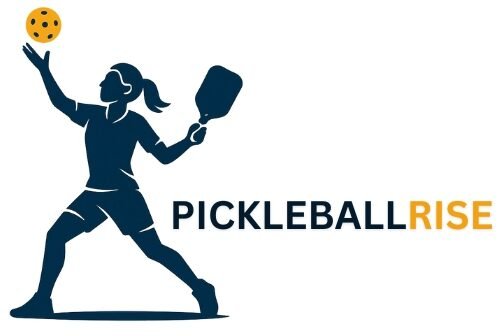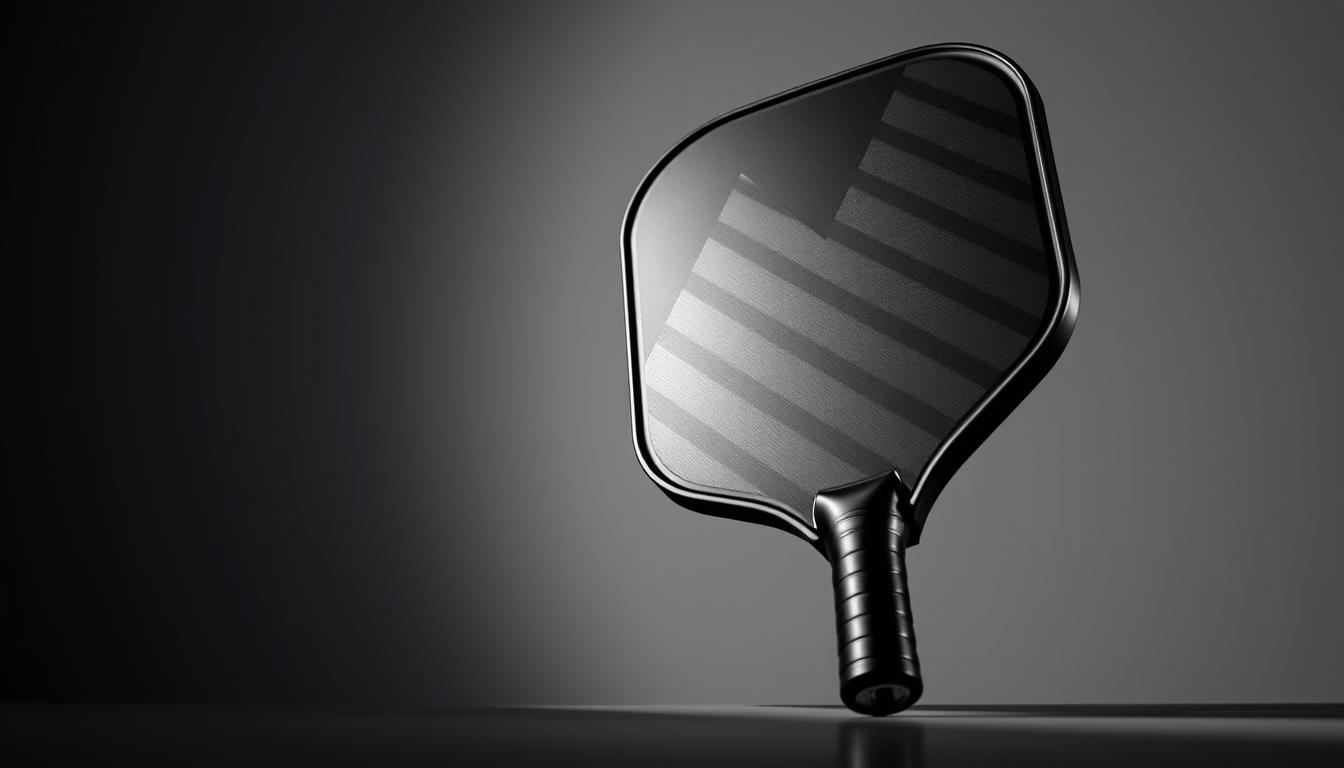Black Diamond Double: 6 Best Pickleball Paddle Alternatives
Ever felt a paddle that feels like a part of you? It’s like finding the perfect black diamond ring. You’re looking for a paddle that matches your playing style and budgetThis article compares six pickleball paddles to the Double Black Diamond. We’ll look at their tech and how they play. You’ll see everything from edgeguarded to edgeless designs. It’s like comparing different black diamond jewelry pieces.
We’ve used test data and real game experience to guide you. You’ll learn about the black diamond double lineage and why some paddles are better for you. By the end, you’ll know which paddles are worth considering as an alternative to the Double Black Diamond.
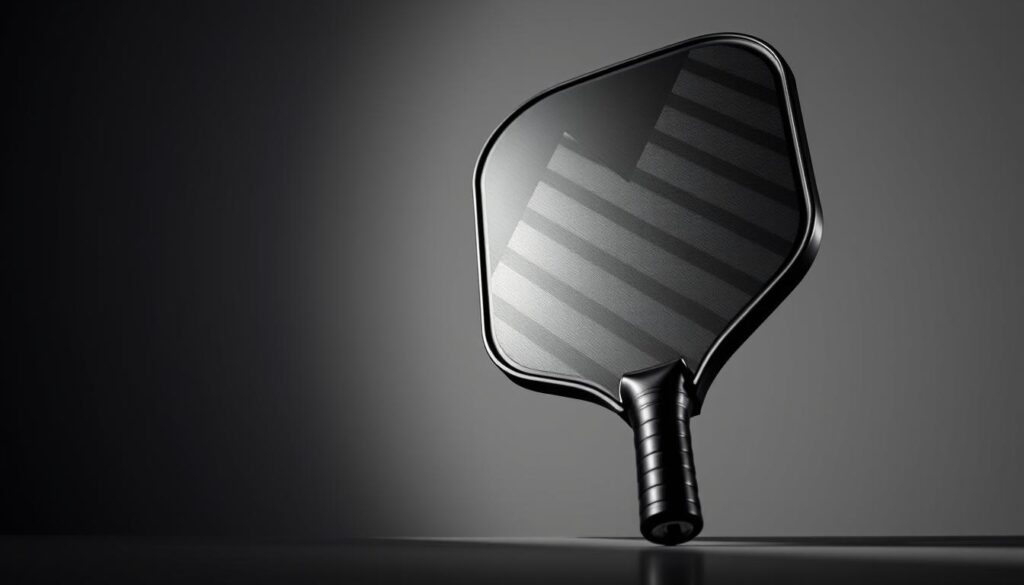
Why you might look for alternatives to the Double Black Diamond
When looking for a control-focused paddle, the Double Black Diamond is often at the top. It’s known for its gritty feel, balanced design, and consistent pop. Yet, your personal preferences or budget might lead you to explore other options.
Overview of the Double Black Diamond lineage and performance expectations
The Double Black Diamond is famous for its control and spin consistency. It offers a mid-range price with a premium feel. If you’re after a precise net game, this lineage is a good fit.
Common reasons players seek competing paddles: weight, sweet spot, swing speed
Some players seek a larger sweet spot for better control during fast plays. Others prefer lighter paddles for quicker reactions. Some also look for softer paddles for better touch shots or more pop for aggressive play.
Price is a big factor for many. If you want control without the high cost, there are affordable alternatives. Your playing style and comfort with paddle weight will influence your choice.
How external edgeguards vs edgeless construction change feel and forgiveness
The debate between edgeguards and edgeless paddles impacts feel and forgiveness. Edgeguards add weight and cushion, making the paddle more forgiving. However, they also increase swing weight and reduce maneuverability.
Edgeless paddles are lighter, making them quicker and easier to handle. Some models remove the guard for a cleaner feel. If you prefer a weighted paddle, you might add weight later to match your preference.
Understanding how these construction types affect your game will help you find the perfect alternative.
black diamond double: what it delivers and where rivals can match it
The Black Diamond Double is known for its control, spin, and pop. It has a hybrid shape that’s forgiving yet allows for precise placement. Players love its gritty face for heavy spin and satisfying feel on serves and putaways.
Key technical points you should note:
Its core and face work together for consistent play. Some models have an external edgeguard for better control. Others are edgeless with carbon layers for a faster swing.
Play styles that get the most from this paddle:
- Control-focused players who want precise placement without sacrificing touch.
- Spin-oriented players who benefit from a gritty face and stable core for heavy topspin.
- Balanced aggressors who need enough pop for finishing shots while keeping rallies in play.
On-court, the DBD offers a crisp feel and predictable lane. An external edgeguard adds forgiveness. For quicker handling, choose an edgeless model with rim carbon.
Rivals can match the Black Diamond Double in several ways. Modern foam-core paddles like the Honolulu J2NF and CRBN TruFoam Genesis 4 offer large sweet spots and steady bounce. Power-first paddles like Bread & Butter Filth provide similar pop with manageable forgiveness.
When shopping, you might see terms like double band ring or black diamond engagement ring. These are cosmetic choices that don’t change how the paddle plays. But they might influence your choice if style is important to you.
What to prioritize when comparing paddles to a premium control paddle
When looking for a paddle, start with a clear goal. Decide if you need more power or finer touch. This choice affects everything, from the core to the shape and handle length.
Power vs control: how to decide based on your strengths and weaknesses
Think about what holds you back. If you struggle with dinks and soft shots, choose a control paddle. It will help you place the ball better and reduce errors. If your dinks are strong but your finishes are weak, go for a paddle with more power.
Testing is crucial. Try a control paddle against a power paddle in a real game. This shows you the differences in action, not just on paper.
Sweet spot size, dwell time, and material impacts (foam core, fiberglass, carbon)
Core and face materials affect feel. Foam cores make the sweet spot bigger and help with soft shots. Carbon and fiberglass faces make shots quicker and more aggressive.
When trying paddles, compare foam core, fiberglass, and carbon. Foam is forgiving and steady. Fiberglass is balanced. Carbon is crisp and powerful. Choose based on what you need.
Shape and handle length: wide-body, hybrid, elongated and how they affect play
Shape changes how you play. Wide-body paddles are good for steady control. Hybrid paddles are versatile. Elongated paddles are for power, but may lack forgiveness.
Handle length is important for volleys and wrist control. Short handles are better for quick net play. Long handles are good for serves and overheads. Your background, like tennis or racquetball, can help choose the right shape.
Perimeter weighting and edge design also matter. Heavier rims are forgiving but slow your swing. Edgeless paddles are fast but may miss certain shots. Think about these when comparing paddles like the black diamond double.
Remember the black diamond wedding band tip. Check the face grit and texture. Grit affects spin and ball grip. Combine core, face, shape, and handle to find a paddle that suits you.
Honolulu Sword & Shield J2NF — next-gen foam performance to rival control paddles
The Honolulu Sword & Shield J2NF is a modern foam core paddle at a budget-friendly price. It offers a large sweet spot and a lively feel. This is without the high cost of $250–$300 that some paddles have.
Why its foam core creates a large sweet spot and consistent bounce
The J2NF has a tuned foam core that spreads impact energy. This design gives consistent bounce and reduces harsh feedback. It’s known for its large sweet spot, making it a top choice among players.
How it balances forgiveness and pop compared to DBD-style paddles
Compared to the black diamond double family, the J2NF offers more forgiveness. It still has satisfying pop. The fiberglass and carbon fiber faces ensure quick response and spin.
Who should consider the J2NF: intermediates wanting foam tech without premium price
If you’re looking for foam tech without the high cost, the J2NF is a good choice. It costs around $175.50, which is about $100 less than many foam rivals. It’s a forgiving, maneuverable paddle that’s affordable.
For players considering edgeguard options, the J2NF is a great choice. It has a low swing weight and a broad sweet spot. This makes it perfect for those who prefer maneuverability over the extra cushion of some foam models.
CRBN TruFoam Genesis 4 — foam-powered spin and speed that challenge top models
The CRBN TruFoam Genesis 4 introduces a new foam core for more spin and speed. It has a carbon face for extra pop and a longer-lasting foam. This paddle is perfect for players who need aggressive shots but still want to control soft ones.
Durability and consistent performance advantages of next-gen foam cores
The Genesis 4 outshines older foams in durability. Pickleheads and other players say it keeps its shape well, even with heavy use. This makes it worth the $280 price tag for those who play a lot.
How the Genesis 4 trades off sweet-spot size for speed and placement
It has a smaller sweet spot but responds faster. The center feels smaller than some paddles, but it still allows for precise shots. It’s great for players who like quick shots and lots of spin.
Which players benefit: avid players who want power, spin, and long-lasting construction
It’s perfect for players who love aggressive shots and precise finishes. It’s as good as some paddles with extra weight on the edges but in a different way. It’s great for those who want fast responses and durability.
Think about what you want. If you prefer a paddle that’s forgiving and feels balanced, choose another. But if you’re after lots of spin, pop, and durability, the CRBN TruFoam Genesis 4 is a top pick.
Bread & Butter Filth — power-first design that still offers control and forgiveness
The Bread & Butter Filth is all about raw power but still keeps things forgiving. It has a carbon face that grabs the ball for spin and aimed drives. Plus, it has a sweet spot that keeps wild flyaways in check, helping your aggressive swings stay on target.
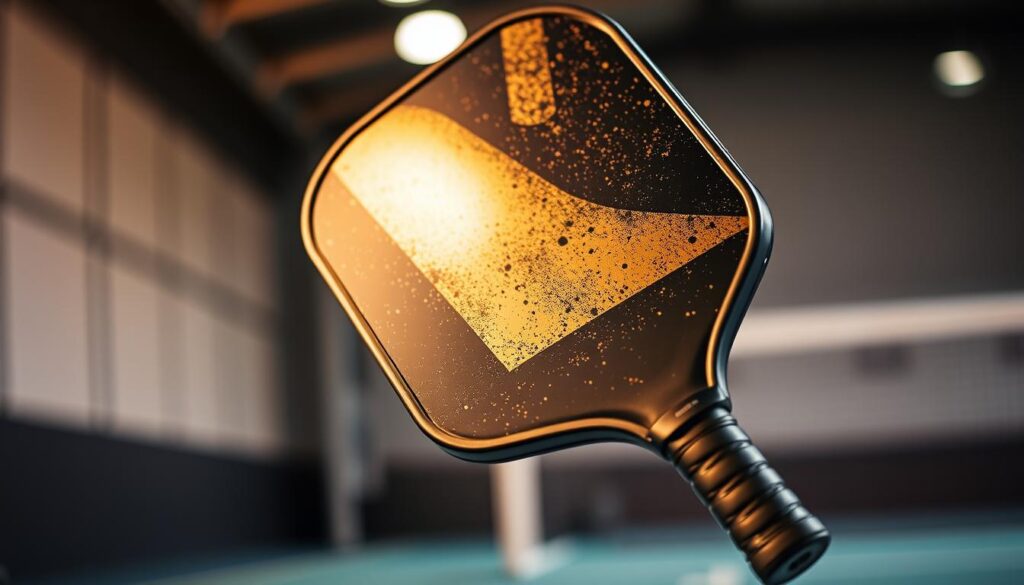
The construction of this paddle affects how it feels and performs. A stiff carbon hitting surface gives it a powerful feel right from the start. Inside, foam cushions the impact, allowing for control and reducing harsh feedback on fast volleys.
During finishing putaways and frantic kitchen exchanges, you’ll see the results. Testers love its quick balance, making it easy to maneuver. When you hit it full, the Filth gives you the pop you need to close points.
This paddle offers clear trade-offs compared to traditional control models like the black diamond double. It rewards big swings with speed and placement. Yet, it still has enough touch for soft dinks and tight-angle plays near the net.
Consider the Bread & Butter Filth a value option against pricier power models like the JOOLA Perseus Pro IV. At its price, it’s a great choice for players moving past beginner gear. They want a power paddle that’s still easy to handle in high-pressure play.
If your game is all about attacking but you still need forgiveness at the kitchen line, this paddle is for you. It’s perfect for players who want aggressive results but still need reliable control when points get tight.
11SIX24 Pegasus Jelly Bean — budget-friendly forgiveness and user-friendly play
The 11SIX24 Pegasus Jelly Bean has a widebody profile and a big sweet spot. This reduces the chance of hitting the ball off-center. It’s perfect for beginners or early intermediate players who want consistent play without spending a lot.
Widebody shape and sweet spot. The paddle’s design helps you hit the ball more accurately. You’ll have smoother rallies and fewer surprises when you focus on your aim and court position.
Fiberglass face and playability under $100. The fiberglass face adds spin and a nice feel without costing too much. You’ll get good control on serves and third-shot drops, all for a price that’s lower than most premium paddles.
Who should consider this paddle. If you’re looking for accuracy and consistent contact, the Pegasus Jelly Bean is a great choice. It may not beat out power paddles, but it helps improve your skills and keeps your game steady.
How it compares to premium control options. The Pegasus Jelly Bean is a more affordable way to get the control feel of the black diamond double. It’s for players who want precision like DBD but don’t want to spend a lot.
Value note. Pickleheads and gear guides often recommend this paddle for its value. Rackets & Runners suggest knowing the limits of cheaper gear. The Pegasus Jelly Bean is a great mix of forgiveness, spin, and playability for its price.
Styling aside. If you like fancy designs, remember that looks don’t affect how well a paddle plays. Pay attention to how it feels in your hand and during play before you buy.
Pickleball Apes Pulse S — plush touch and control for players stepping up
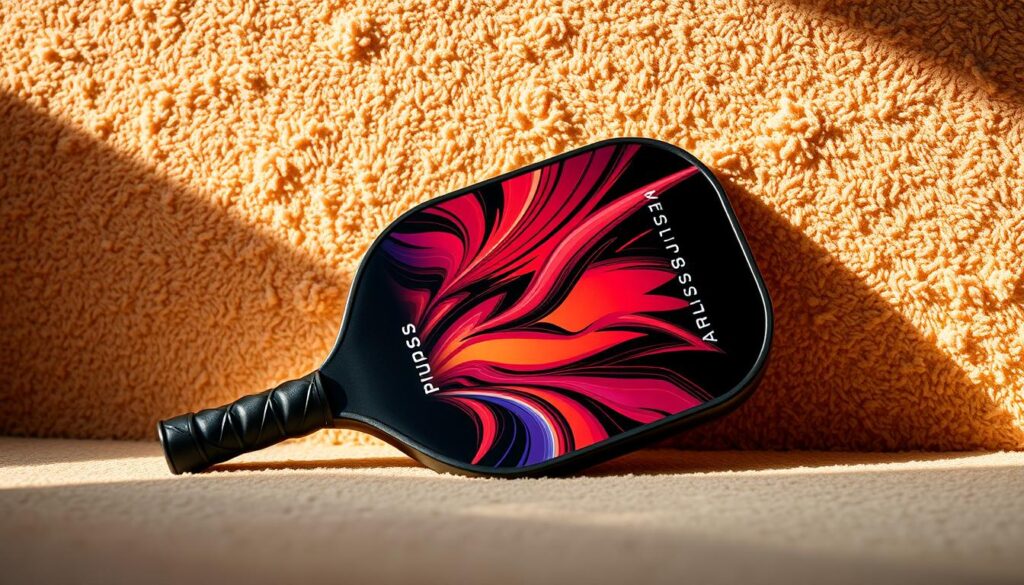
The Pickleball Apes Pulse S has a soft, forgiving face. It helps you play softly without losing spin. You’ll find it easier to place dinks and touch volleys because of the longer contact time.
Pickleheads says it’s a great upgrade for those who want to control their shots better. It keeps the spin consistent on your shots.
Soft feel and spin potential
The Pulse S has a softer surface and a tuned core. This combo lets you shape your shots with more finesse. It also keeps the spin going when you need it.
If you’re working on touch shots and keeping spin, this paddle is a good choice. It helps you do that well on the court.
Touch and forgiveness versus control-oriented models
Compared to paddles like the black diamond double, the Pulse S has more dwell. It also gives you softer feedback. This makes it easier to place your shots and hit fewer mistakes in tight games.
If you prefer precision over power, the Pulse S is for you. Its soft touch reduces shock. This helps you keep the ball in play more often.
Who should consider the Pulse S
Intermediates looking to improve their precision and doubles play will like this paddle. It’s a good choice if you’re moving up from a beginner model. You’ll focus on placement and touch.
Players who want aggressive pop might prefer other paddles. The Pulse S is for those who value controlled, tactical play. It’s a step towards higher-level control while keeping your soft game sharp.
Six Zero Double Black Diamond Control — a direct comparison within the same family
The Six Zero Double Black Diamond Control is praised for its value. It’s a mid-price paddle that feels like a high-end model. It has a gritty face for heavy spin and a pop that helps with placement.
This paddle offers a balanced feel. Its face grit and core choice give you predictable play. It’s great for players who value precise shots over raw power.
In a DBD control paddle comparison, the Six Zero shines for its price. It’s cheaper than many paddles but still offers key features. You get spin and accuracy without the high cost.
When comparing edgeguards, the Six Zero is different from traditional Double Black Diamond models. It has external edgeguards for forgiveness and added weight. Infinity-style edgeless paddles are quicker and more agile.
If you want gritty spin and balanced pop, check out the Six Zero Double Black Diamond. But if you prefer a lighter swing or a bigger sweet spot, compare it to Infinity DBDs and foam paddles.
For those seeking control, the black diamond ring design is a sign of precision. Use these points to test paddles in person. This will help you decide between Double Black Diamond models and other options.
How to test and choose among these contenders: a step-by-step demo plan
Begin with a simple plan to stay focused. Set a budget and decide what improvements are most important. Rackets & Runners suggests price ranges: $120–$180 for entry to mid, $180–$250 for competitive, and over $250 for elite gains. This helps narrow down options like the black diamond double or more affordable rivals before choosing paddles to demo.
Next, set practical goals for each session. Test power, control, spin, and consistency. Use timed drills and spot-to-spot placement work. Track how each paddle affects your volley, third shot, and dinks. Note how a model such as Six Zero or a foam design changes dwell time and feel compared with the black diamond double.
Use a simple checklist during each trial. Record swing weight, perceived pop, and comfort on long points. Try a mix of thermoformed and traditionally molded faces to feel differences in stiffness. The black diamond double halo ring detail or cosmetic finish won’t change playability, but surface grit and face material will affect spin and touch.
Run multi-paddle demo sessions in the same week. Play short sets with each paddle against equal-or-better opponents. High-pressure play reveals whether a paddle supports fast hands, consistent serves, and clutch volleys. Narrow to two or three favorites and repeat the stress tests until one feels pressure-proof on court.
Match paddle shape to your background. Tennis players often prefer elongated heads for reach and power. Table-tennis or badminton players may like shorter, wide-body shapes for quicker wrist action. Testing both control and power designs helps you discover changes in your game you did not expect.
Factor budget into the final pick. Look for value in durability, face grit for spin, and core tech that suits your style. Use store loaners or demo programs to confirm long-term comfort. When you finalize, you will know how to choose pickleball paddle based on real play, not specs alone.
Conclusion
You now have a list of six paddles that match the black diamond double. Pickleheads tested over 200 paddles. They found the Honolulu J2NF for its foam forgiveness and pop. The CRBN TruFoam Genesis 4 is great for durable foam power and spin.
Bread & Butter Filth is perfect for those who want power first with control. The 11SIX24 Pegasus Jelly Bean is a budget-friendly option for forgiveness. Pickleball Apes Pulse S offers plush touch and control. The Six Zero Double Black Diamond Control is a value-forward control option.
Use Rackets & Runners’ buying framework to choose. Set your budget and match the paddle shape to your background. Also, demo control versus power under pressure.
Consider edgeguard versus edgeless construction and perimeter weighting. These factors affect forgiveness, mishit behavior, and swing speed. They are as important as core and face materials when testing on court.
Balance your priorities like sweet spot size, dwell, spin potential, swing weight, and cost. Run multi-paddle demos to find the perfect paddle. Treat this list as the best alternatives to Double Black Diamond.
Find a paddle that fits your game as precisely as a black diamond wedding band or engagement ring fits a hand. The right match should feel tailored.
Remember your long-term goals and budget. Whether you chase control, pop, or durability, use the structured comparison and demo plan above. Your new paddle will be like prized black diamond jewelry—functional and personal.
